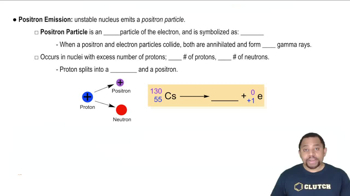Nuclear scientists have synthesized approximately 1600 nuclei not known in nature. More might be discovered with heavy-ion bombardment using high-energy particle accelerators. Complete and balance the following reactions, which involve heavy-ion bombardments:
(a) 63Li + 5628Ni → ?
(b) 4020Ca + 24896Cm → 14762Sm + ?
(c) 8838Sr + 8436Kr → 11646Pd + ?
(d) 4020Ca + 23892U → 7030Zn + 4 10n + 2 ?




